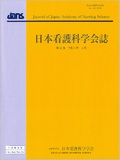Japanese
English
- 販売していません
- Abstract 文献概要
- 参考文献 Reference
- サイト内被引用 Cited by
要旨
目的:日本語版Chronic Kidney Disease Self-Care scale(CKDSC)を作成し,異文化間妥当性,尺度としての1次元性を検討する.
方法:CKDSC(5因子16項目)の翻訳・逆翻訳を行い,日本語訳CKDSCを作成した.調査は保存期慢性腎臓病(CKD)患者を対象として実施した.解析には,確証的因子分析を用い,1次元性は2次因子モデルを構築し検討した.
結果:分析対象者は229名であった.日本語訳したCKDSCは,原版と同じ5因子斜交モデルが成り立った(CFI=.991,RMSEA=.047).2次因子モデルによる検討では,5因子15項目のモデルが1次元性を満たした(CFI=.993,RMSEA=.042).ω係数は.848(各因子.823〜.941)であった.CKDステージ,栄養士からの療養指導の有無で「合計得点」に有意差を認めた.
結論:日本語版CKDSCは,保存期CKD患者のセルフケア行動を評価する尺度として,使用可能であることが示された.
Aim: To develop the Japanese version of the Chronic Kidney Disease Self-Care scale (CKDSC-J) for examining cross-cultural validity and evaluating self-care behavior as a secondary factor.
Methods: The CKDSC was first translated into Japanese using a 5-factor structured model with 16 items and then back-translated. Next, we conducted a survey for predialysis patients with chronic kidney disease (CKD) grade G3-G5. To verify the cross-cultural validity of the CKDSC, we performed a confirmatory factor analysis (CFA). We created a 5-factor secondary model of the primary self-care behavior evaluation scale (15 items; CKDSC-J), and examined internal consistency and the difference in CKDSC-J scores for CKD grade and nutritionist education.
Results: Participants comprised 229 predialysis patients. The CFA revealed that both the CKDSC (CFI = .991, RMSEA = .047) and the secondary model (CKDSC-J; CFI = .993, RMSEA = .042) fit the data well. Additionally, the internal consistency was high for the CKDSC-J at .848 and ranged from .823-.941 for the factors. The CKDSC-J score showed significant differences when compared with CKD grade and nutritionist education, which proved construct validity.
Conclusion: The findings suggest that the CKDSC-J can effectively evaluate daily self-care behavior among predialysis patients.
Copyright © 2021, Japan Academy of Nursing Science. All rights reserved.


